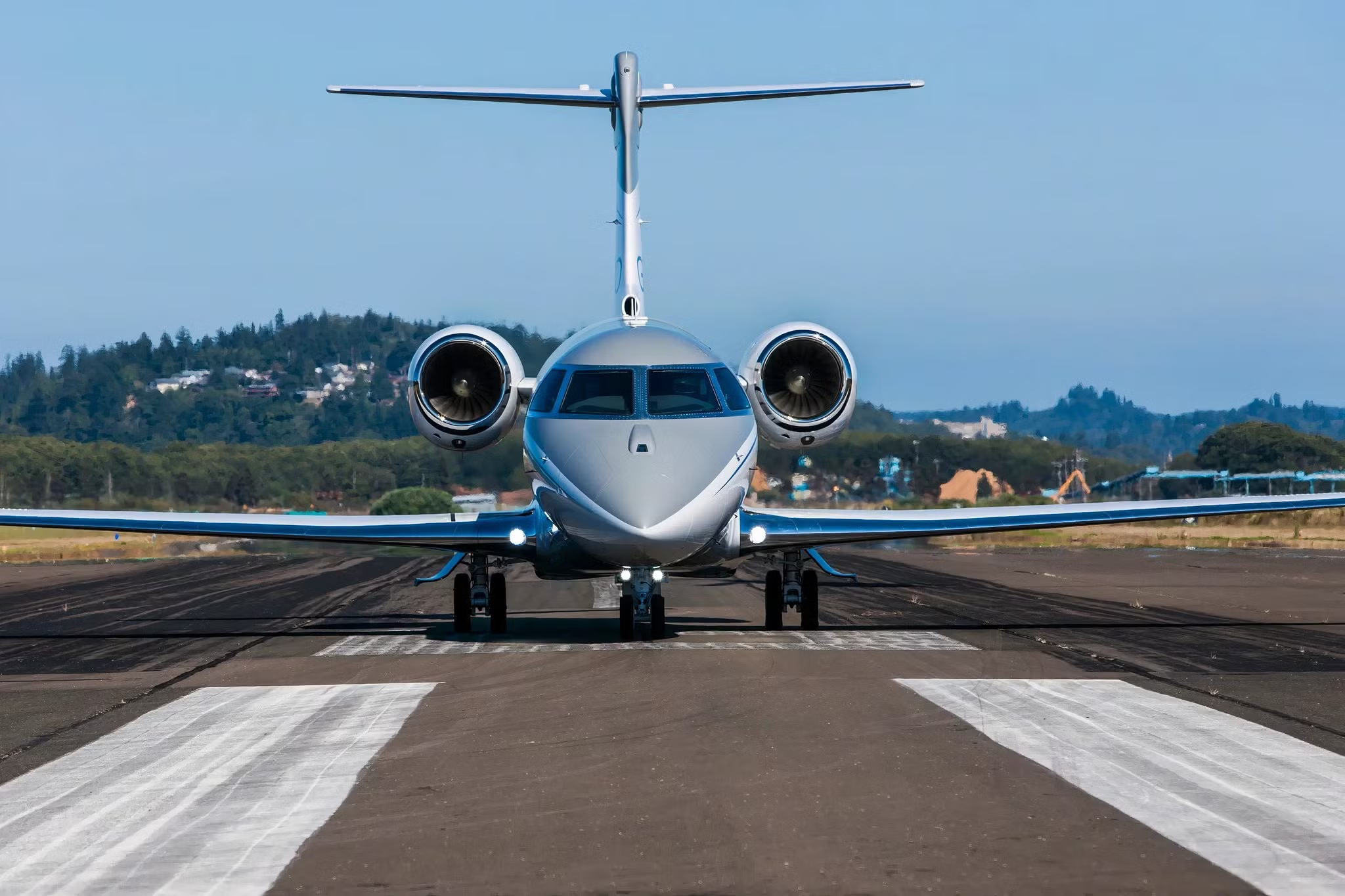Among the many business jets built by manufacturer Gulfstream
, one of the most unique is the Gulfstream G280, an exceptional follow-up to the G200 produced in collaboration with Israel Aerospace Industries (IAI). The plane, which first took to the skies on December 11th, 2009, and entered service with customers not long after, remains in production today, with over 200 aircraft being built as of 2024.

As a midsize private jet with a capacity for about 10 passengers in a typical “Executive-style” configuration, the Gulfstream 280 provides the utmost convenience for private operators. The plane also boasts an impressive range; however, narrowing its capabilities down to a single range figure is a bit more complicated than you might expect.
Built to offer many combinations of speed and range capabilities
Like most private jets built over the past few decades, the Gulfstream G280 is designed to fly at exceptional speeds and is capable of reaching speeds of nearly Mach 0.85. However, when the plane is flying at these incredibly high speeds, it experiences more drag. It thus burns significantly more fuel, diminishing its range when operating at its highest operating speeds.
Nonetheless, the plane is designed to serve medium-haul routes and will almost always need a technical stop for refueling if passengers are looking to make a long-haul intercontinental journey. Nonetheless, the G280’s capabilities are undeniably impressive. Let’s take a deeper look at the Gulfstream G280, how it was developed, how far it can fly, and what the different operational decisions are for those flying the aircraft near the upper boundaries of its range limitations.

Related
A Deep Dive Into The Popular Gulfstream G550
The Gulfstream G550 is a well-established aircraft in the long-range large-cabin jet market.
The aircraft was designed to improve upon many of its predecessor’s commercial weaknesses
The story of the Gulfstream G280 began in 2005, when Gulfstream Aerospace, itself a subdivision of the General Dynamics Corporation, began designing a follow-up aircraft for its popular Gulfstream G200 model. This new model was originally named the G250, and the plane was commercially launched in 2008.
Key selling features of this aircraft included a new glass cockpit, upgraded engines, larger wings with more fuel capacity, and heated leading edges to assist during more difficult weather conditions. The aircraft took to the skies for the first time above Tel Aviv, Israel, and would eventually be renamed the G280.

Related
Produced In Israel: A Look At The Gulfstream G280
The aircraft is assembled in Israel and ferried to the US for painting and interior furnishings.
The reasons for this name change were rather fascinating. Marketing teams at both Gulfstream Aerospace and IAI believed that the G280 was a far more amenable name than the G250, as the number 250 is seen as inappropriate in some cultures. An analysis of the reasons behind this belief concluded that the Chinese market was primarily responsible for this concern, as 250 roughly translates to “idiotic” in Mandarin.
Photo: Gulfstream Aerospace
After extensive flight tests, the G280 was determined to have a range of 3,600 nautical miles when carrying four passengers and an average cargo load for that number of people. This allowed the aircraft to make some journeys that were even at the shorter end of “long-haul,” such as flying from New York to Paris or Bangkok to Doha.
Eventually, the aircraft was certified first in Israel and later by the Federal Aviation Administration (FAA), which did so with some provisional concerns regarding the G280’s electronic systems and the safety implications that certain malfunctions could cause. The aircraft would soon receive full certification and would eventually enter service with operators across the globe with the following specifications, according to manufacturer Gulfstream:
|
Category: |
Gulfstream G280 specification: |
|---|---|
|
Maximum Takeoff Weight: |
39,600 pounds |
|
Service ceiling: |
45,000 feet |
|
Cruising speed: |
530 miles per hour |
So, what speed and range options are available for an operator?
Part of the genius behind the Gulfstream G280’s design is that it boasts efficiency improvements and several impressive design features that reduce the impact of flying at such high speeds on fuel consumption. Thus, the difference between the aircraft’s high-speed and range-maximizing ranges is not all that different. Nonetheless, some long-haul international routes are no longer feasible when operating the aircraft at maximum speed.
Photo: Mike Fuchslocher | Shutterstock
For example, when operating at maximum operating speed, the aircraft can no longer reach New York from London and can barely reach Dubai from London. Meanwhile, when operating in long-range mode, the aircraft can easily reach most cities in the American Northeast from London. By using Gulfstream’s range tool for prospective buyers, we have found some other examples of routes that are easily within range of the Gulfstream G280 when operating for maximum range, including:
- New York to Lima
- Dubai to Beijing
- Sydney to Jakarta
This versatility in speed and range makes it not difficult to understand why the aircraft is so popular with private operators. A New York-based business executive may need to travel to London for a conference, requiring him to use the aircraft’s extended-range mode to get across the Atlantic without refueling. However, on the weekend, when heading to his ski home in Aspen, the individual can fly at maximum speed in his G280 to get on the slopes as quickly as possible.
There are a few regions where the G280’s capabilities are extremely lacking. There are no real routes across the Pacific that the G280 can fly without refueling, and the plane struggles to fly from places like Cape Town or Buenos Aires to any of the major business hubs in Europe and Asia.



